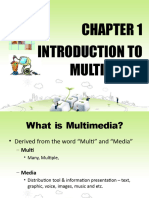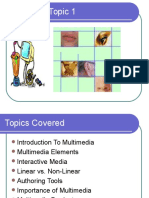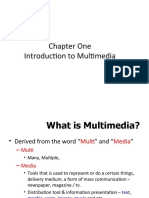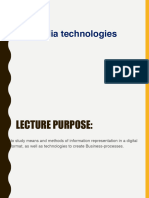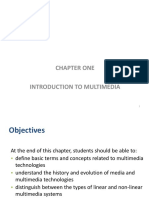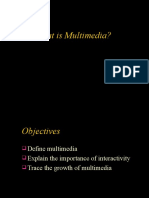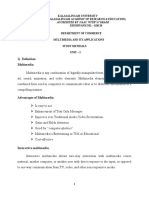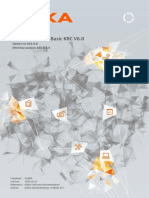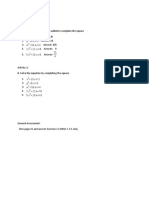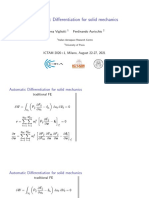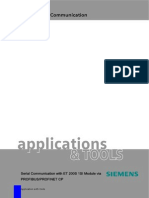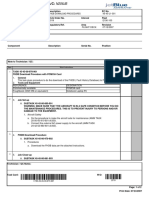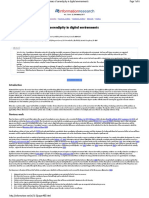0% found this document useful (0 votes)
70 views39 pagesIntroduction To Multimedia
Examples are computer games, interactive movies, virtual tours.
Uploaded by
Angielyn Troyo AmenCopyright
© © All Rights Reserved
We take content rights seriously. If you suspect this is your content, claim it here.
Available Formats
Download as PPTX, PDF, TXT or read online on Scribd
0% found this document useful (0 votes)
70 views39 pagesIntroduction To Multimedia
Examples are computer games, interactive movies, virtual tours.
Uploaded by
Angielyn Troyo AmenCopyright
© © All Rights Reserved
We take content rights seriously. If you suspect this is your content, claim it here.
Available Formats
Download as PPTX, PDF, TXT or read online on Scribd
/ 39




